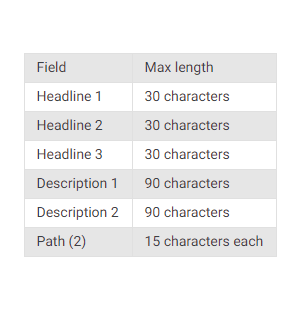
Google introduced its Responsive Search Ads as an ad format that leverages machine learning to deliver the best ads for users' search queries.
One of its biggest advantage though, is having more room to play with. In the search results, Responsive Search Ads can show as many as three headlines, instead of two, and up to two 90-character descriptions instead of just one 80-character description.
This enables advertisers to convey their message better.
Starting in August, Google is extending that benefit, and giving that to its Text Ads. What this means, advertisers can add a third Headline and a second Description to their Text Ads. In addition to that, Descriptions can have up to 90 characters.

Google started testing 'Responsive' Text Ads earlier in 2018, and announced it on Google Marketing Live in July.
The ad format is unlike standard Text Ads, as it uses machine learning technology which is also used by Responsive Search Ads. This allows Google to determine which combination of Headlines and Descriptions to show to a user.
And with three Headlines to start with, advertisers can, for example, use two Headlines to show their brand name and official site, and marketers can add a third headline showing shipping details or special offers.

Along the way. Google has been making its ads longer and bigger.
The standard Text Ads for example, were initially called Expanded Text Ads (ETAs). This ad format brought 30 character count instead of the previous 25 and also lengthened the description line. As Google relies more on machine learning technologies in its operations, the company started encouraging advertisers to add more ads to their ad groups.
Responsive Search Ads started as a Google's attempt in leveraging machine learning to create ad creative optimization.
It allows Google to dynamically serve varying combinations of Headlines and Descriptions, to then optimize the ad delivery based on the top-performing Headline and Description combinations.
Responsive Search Ads lightens the workload for advertisers, and giving Google’s systems more control and flexibility to optimize ad combinations in real time. And with it reaping many of the benefits, Google is expanding its abilities to other format it owns.
Google is also rolling out Responsive Search Ads to more advertisers in English, French, German, and Spanish, with other languages to follow.
"While we work on improving responsive search ads across languages, it’s important to extend that same advantage to your existing text ads," said Google
